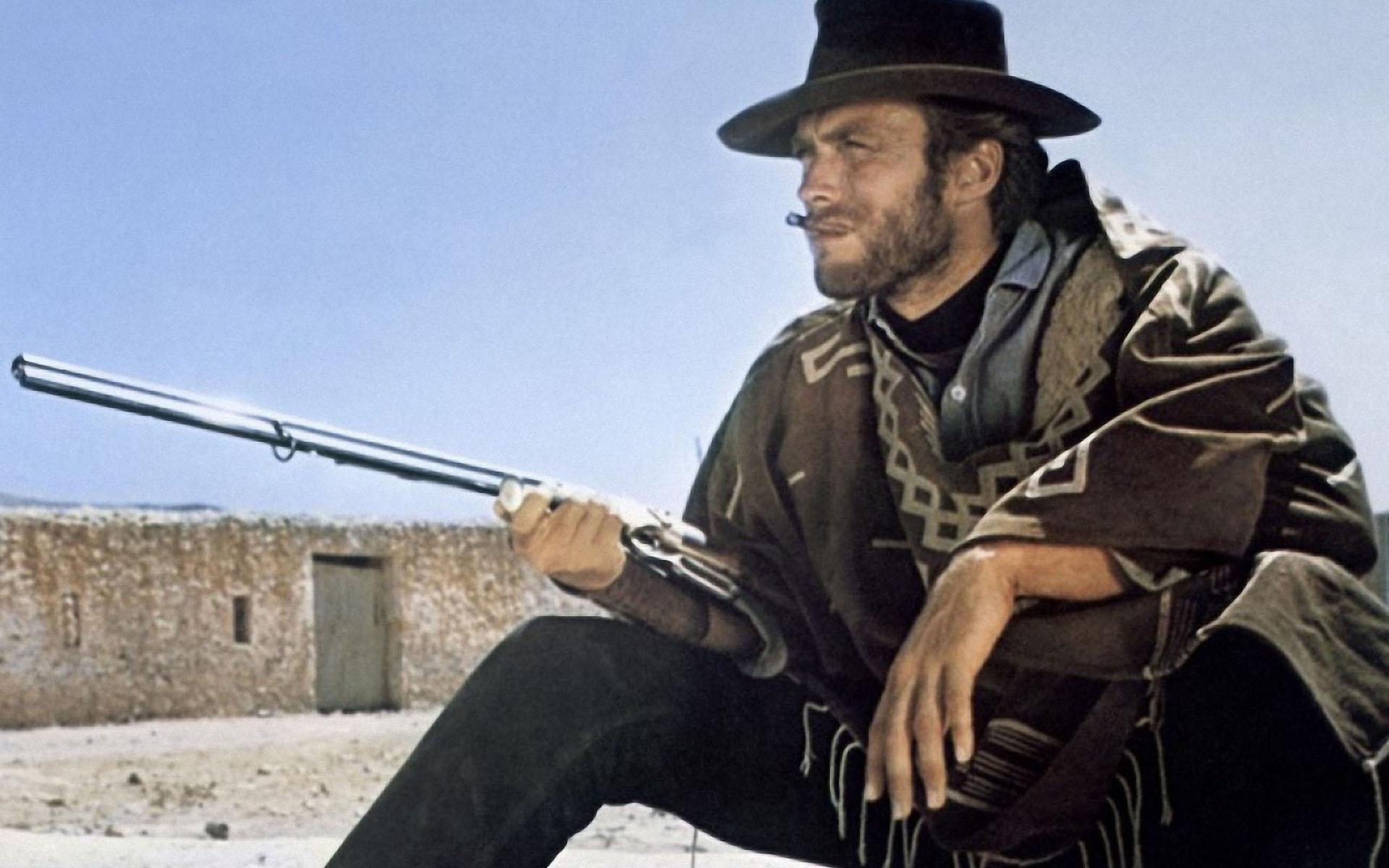My President’s Day weekend was dominated by two events: the San Francisco Chinese New Year Treasure Hunt and the usual bout of movie watching. The former is an indispensible experience if you’re a Bay Area resident (check out the site for more details), although this year’s version was particularly tough, given the elements (rain and a raucous Chinese New Year parade downtown). I also did my four teammates Jack, Sean, Carrie and Erik no favors by signing us up for the Regular level hunt (we usually opt for Beginner’s level). Still, given the weather and our battle with the parade crowds down Stockton and Powell streets, I thought we did rather well. I’m still waiting to see the final answers on the hunt website, but if we did our jobs, I think we got 12 or 13 out of 18. Maybe one day when we’re old, gray, eccentric San Franciscans we’ll get them all correct.
But today I come here not to bury the hunt, but to praise three flawed but fascinating “classics” I watched over the weekend. One I’ve seen in the past (“For a Few Dollars More”), one I saw the first half of previously (“Murder My Sweet”), and one I had seen in bits and pieces at various times (“How to Steal a Million”). All of them are idosyncratic, unique creations.
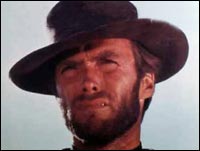 “Is the question indiscreet?”
“Is the question indiscreet?”
“No, your question isn’t indiscreet … but the answer could be.”
— Clint Eastwood and Lee Van Cleef
“For a Few Dollars More,” the second film in Sergio Leone’s justly-celebrated “dollars” trilogy, is the very definition of a “transitional” film. Throughout, you get the sense that Leone is chafing against the very paradigms he minted in his first “dollars” film, “A Fistful of Dollars.” The setup is remarkably similar — once again, Clint Eastwood rides into town, the gunman without a past, the grizzled anti-hero, pretending loyalty to a vicious gang led by a psychopath played by Gian Maria Volonte, exposed as a traitor and sadistically beaten, reemerging and blowing away the baddies in a suitably theatrical final showdown, riding off into the sunset a much richer man. And as in the previous film, Leone masterfully mixes tension, gallows humor, and exquisitely framed face-offs.
Yet this film is not the neat, compact parable that “Fistful” is — not surprising, given that the first film’s scenario was based on Kurosawa’s “Yojimbo” (which was based on Dashiell Hammett’s “Red Harvest”), and the last thing you can say about Kurosawa is that he is unwieldy. This time out, longeurs and digressions abound. The opening three-minute shot follows a lone horseman who is ambushed by a long-range sniper — significantly, we are never told who the sniper or victim are. For the first time, Leone is stretching out within the cinematic form; in subsequent films he expands on this strategy, culminating in the epic 17-minute opening of “Once Upon a Time in the West.” Later, a long, withering monologue by a crazed old man about the coming of the railroads and the end of the Old West appears out of nowhere, but prefigures the Civil War railways of “The Good, the Bad, and the Ugly,” and the metaphor of railway-as-civilization that gives “Once Upon a Time” the most powerful thematic kick of any of Leone’s westerns.
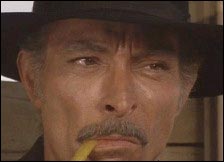 Even more intriguing is how Leone knocks down some of the ultra-tough male conventions he set up in the first film. In “Fistful,” Eastwood’s nameless protagonist was a force of nature, playing rival families off each other like pawns, remaining above the action even when embroiled in it, seemingly invincible. In “For a Few Dollars More,” not only does he have a name (Manco, the only time he is named in the entire trilogy), but far from being all-powerful, he looks downright foolish at times as he fails to match wits with Col. Douglas Mortimer (Lee van Cleef), the experienced Civil War vet who eventually aids him. Yet Mortimer himself cannot be considered the equivalent of the Eastwood character from the first movie, for beneath his collected exterior lurk regret and hidden reasons for vengeance, another trope that will find full expression in Charles Bronson’s character in “Once Upon a Time.” In a role that is a far cry from the Bad in “The Good, the Bad, and the Ugly,” Van Cleef grabs the spotlight, his narrowed gaze suggesting irreconcilable sadness even as his Van Gogh nose and lean body paint a striking picture of coolness under fire. Eastwood, of course, is too charismatic an actor to fade into the background, and as expected, he walks away with the film’s best one liners. I won’t soon forget his concluding assassination, and punch line: “No problem, old man … just thought I had a problem with my adding.”
Even more intriguing is how Leone knocks down some of the ultra-tough male conventions he set up in the first film. In “Fistful,” Eastwood’s nameless protagonist was a force of nature, playing rival families off each other like pawns, remaining above the action even when embroiled in it, seemingly invincible. In “For a Few Dollars More,” not only does he have a name (Manco, the only time he is named in the entire trilogy), but far from being all-powerful, he looks downright foolish at times as he fails to match wits with Col. Douglas Mortimer (Lee van Cleef), the experienced Civil War vet who eventually aids him. Yet Mortimer himself cannot be considered the equivalent of the Eastwood character from the first movie, for beneath his collected exterior lurk regret and hidden reasons for vengeance, another trope that will find full expression in Charles Bronson’s character in “Once Upon a Time.” In a role that is a far cry from the Bad in “The Good, the Bad, and the Ugly,” Van Cleef grabs the spotlight, his narrowed gaze suggesting irreconcilable sadness even as his Van Gogh nose and lean body paint a striking picture of coolness under fire. Eastwood, of course, is too charismatic an actor to fade into the background, and as expected, he walks away with the film’s best one liners. I won’t soon forget his concluding assassination, and punch line: “No problem, old man … just thought I had a problem with my adding.”
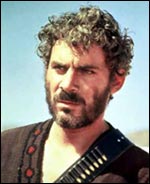 But both Eastwood and Van Cleef play second fiddle to Volonte, whose villainous Indio also breaks the mold. In “Fistful,” Volonte was a contained yet flamboyant psychopath, unrivalled in cruelty; here, he has a field day playing a full range of emotions, from self-mockery to calculation to anguish to regret for a woman whose murder he was responsible for. And like Eastwood and Van Cleef, he is also eminently fallible: he spends half the film skulking around in prison rags (he begins the movie incarcerated and disgraced), and later is even taken hostage by one of his own henchman. He is also possessor of the film’s most striking element, a musical pocket watch that he plays during his showdowns. Ever the showman, Leone uses the watch no less than three
But both Eastwood and Van Cleef play second fiddle to Volonte, whose villainous Indio also breaks the mold. In “Fistful,” Volonte was a contained yet flamboyant psychopath, unrivalled in cruelty; here, he has a field day playing a full range of emotions, from self-mockery to calculation to anguish to regret for a woman whose murder he was responsible for. And like Eastwood and Van Cleef, he is also eminently fallible: he spends half the film skulking around in prison rags (he begins the movie incarcerated and disgraced), and later is even taken hostage by one of his own henchman. He is also possessor of the film’s most striking element, a musical pocket watch that he plays during his showdowns. Ever the showman, Leone uses the watch no less than three 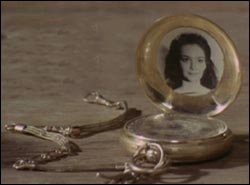 times in the film, and the great Ennio Morricone seamlessly merges the chimes with his score, even as he creates unique sound signatures for his major players (the familiar sliding whistle for Eastwood, a mouth harp for Van Cleef). Yet even with this iconography being bandied about, when we get to the final duel between Indio and Mortimer, you feel the vulnerability of the participants, and even the humanity behind their blood lust.
times in the film, and the great Ennio Morricone seamlessly merges the chimes with his score, even as he creates unique sound signatures for his major players (the familiar sliding whistle for Eastwood, a mouth harp for Van Cleef). Yet even with this iconography being bandied about, when we get to the final duel between Indio and Mortimer, you feel the vulnerability of the participants, and even the humanity behind their blood lust.
“For a Few Dollars More” may conceptually be the weakest of Leone’s “Dollars” trilogy — the central bank robbery plot is well executed, but lacking in true ingenuity, and the deliberate echoes of the earlier film come off as a lack of fresh ideas rather than homage — but it is a keystone to understanding his later films, and in its characters’ understated vulnerability, it stands apart from the iconic figures that populate his other westerns. The answer to Colonel Mortimer’s past may be indiscreet, but the shadings of its characters are anything but.
Coming in the next installment: “Murder, My Sweet.”

